Greg Blomquist
University of Missouri Biological Anthropologist
Welcome
I am a biological anthropologist interested in the evolutionary genetics, reproductive biology, and demography of humans and non-human primates. Please, explore the page below for further information about me or visit the University of Missouri anthropology department website or faculty listing.
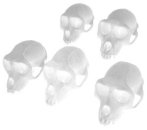
If you're wondering how to pronounce "Blomquist"… 🔊
Contact:
Department of Anthropology
112 Swallow Hall
University of Missouri
Columbia, MO 65211–1440
📞 skype: greg.blomquist
✉ email: BlomquistG@missouri.edu
💻 gitlab: @gregblomquist
🌐 web: gregblomquist.gitlab.io
Research
My curriculum vitae is available as a webpage with embedded links to publications (or pdf for printing). You can also check my Google Scholar citations or ORCID listing.
Primate Life History Evolution
The major topic of my research is the ecology and evolution of patterns of growth, reproduction, and mortality in primates. This integrates analysis of demographic variables that directly influence lifetime reproductive success, related behavioral traits such as maternal care and infant temperament, physiological indices of maternal investment through lactation, and the anatomy of growing and adult individuals.
This is carried out at two complementary levels exploiting variation among individual population members and variation among the diversity of living primate species.

Quantitative Genetics of Primate Populations
I apply statistical methods developed by animal breeders and medical geneticists to use pedigrees of primate populations for measuring genetic and environmental contributions to the observable variation in primate life history, anatomical, physiological, and behavior traits. These results describe life history evolution at the level of microevolutionary change and can be used directly to test theoretical models of growth, aging, reproductive effort, parental investment, and parent-offspring conflict. Current research uses captive squirrel monkeys (Saimiri boliviensis) and captive or free-ranging rhesus macaques (Macaca mulatta).
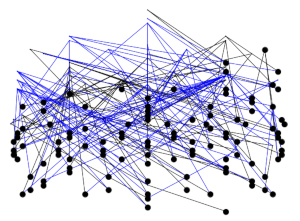
Comparative Biology of Primate Species
Identifying trait associations across primate species is a classic method for generating and initially testing hypotheses about primate life histories. These interspecific differences reflect the accumulated effects of many generations of microevolution within primate populations. Research has dealt with the sequence of events in human and chimpanzee anatomical development and the correlates of milk composition among primates and other mammals.
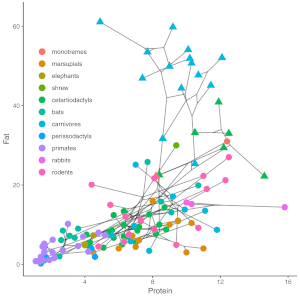
Teaching
Student Opportunities
Looking to get involved in research?
I encourage students looking for a place to do master’s or doctoral research to send me an exploratory email telling me everything relevant about their background (e.g. past education, research interests and experiences, career goals, GPA, GRE scores). This is the best way to find out if Mizzou would be a good place for your graduate studies. Be certain you have an to answer the big question you should be asking yourself: "Why do I want to go to grad school?".
Undergraduate students have also participated in my research. Course credit can be obtained from these projects through enrollment in: Research Skills (Anthropology 2950), Undergraduate Research (Anthropology 4950), and Honors Research (Anthropology 4950H, eligible for departmental honors).
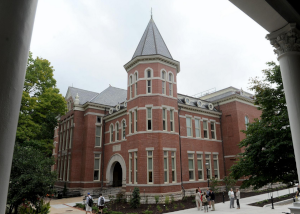
Regularly Offered Courses
I teach the courses listed below every few semesters. MU students can check myZou for course scheduling and Canvas for course resources.
Introduction to Biological Anthropology Anthropology 2050/2051 Where do humans come from? What makes us different from other animals? How do we differ from one another? These are major questions dealt with in biological anthropology–the sub-discipline of anthropology concerned with evolutionary aspects of human biology and their dynamic relationship with culture. This course provides students with an introductory survey of how biological anthropologists try to answer these questions: by exploring the biological diversity of living humans, by comparing humans with non-human primates, and by examining the fossil record of human ancestors. Anthropology 2050 is a lecture+lab course, Anthropology 2051 is only the lecture.
Primate Anatomy & Evolution Anthropology 2500 This course will explore why primates (including humans) are built the way they are, how they evolved, and what their anatomy tells us about their biology. We will cover basic primate anatomy and ecology, and then survey the fossil record of primate evolution.
Human Biology & Life History Anthropology 3540 A general survey of human biology, focusing on the development of the individual from infancy to adult and the biology of human populations. Satisfies A&S foundation requirement in Biological Sciences.
Human Biological Variation Anthropology 4540/7540 The study of human biological variation is not an exercise in simply opening our eyes and recording what we see. Every one of us makes sense of the people we interact with by assigning them to meaning-laden categories that are specific to where and when we live. Scientists and their authoritative statements on human biology have played an influential role in reinforcing or re-imagining these categories and meanings. Whether deliberate or not, describing and interpreting human biology has been a powerful "social weapon" and often contributed to entrenched discrimination through a deterministic view of poverty, crime, gender roles or sexuality, and racial or ethnic difference. The initial readings, class discussion, and assignments in this course will require you to consider cross-cultural diversity in racial categories and more universal cognitive structures for category making. Later units explore the history of what scientists think they know about human variation and its repercussions that are most obvious in medicine and law. The following units provide a state of the art view of human global genetic diversity and a series of case studies on adaptation to various environmental conditions such as infectious disease, climate, and diet. Both emphasize how human biodiversity emerged through biological and cultural mechanisms. The final weeks of the course focus on understanding human behaviors including intelligence, athleticism, aggression, and sexuality.
Human Evolutionary Genetics Anthropology 4885/7885 Human genomes contain a wealth of information such that anthropologists and geneticists have mined global genetic diversity to describe the ancestry of the people all over the world. In doing so, they have described ancient and recent population movements and mixtures, identified genetic signatures of adaptation to local environmental pressures, highlighted the pervasive influence of culture on human biodiversity, and helped wipe away any genetic basis for racial categories in humans. Students in the course apply population genetic methods to public databases using current software to understand how we know what we think we know about human genetic diversity.
Graduate Seminars Anthropology 8587 From time to time, I offer seminars on particular topics in biological anthropology for graduate students. These are listed as Anthropology 8587: Seminar in Physical Anthropology with the topic advertised a semester or so prior to its offering.
Bio
I grew up in Lexington, Kentucky—land of basketball, racehorses, and bourbon. My first interest in anthropology was a 6th grade project on human fossils inspired by some National Geographic articles and F. Clark Howell's Time-Life book Early Man from our elementary school library. My parents bought me Johanson and Edey's Lucy for the project, but I can only remember paging through it at the time to look at the Jay Matternes and John Gurche reconstructions. I don’t think I read much of it until I was in high school.
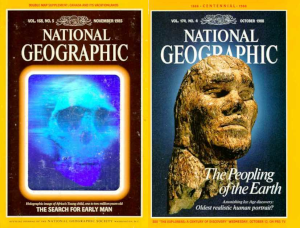
I majored in biology and history as an undergraduate at Ohio Wesleyan University half knowing it would be a roundabout way of preparing for "4-fields" anthropology. I went to grad school at the University of Illinois thinking I wanted to do paleoanthropology, got a chance to do it for a summer in Kenya, but eventually was drawn to the kinds of questions about life history evolution I'm still dealing with in my research.
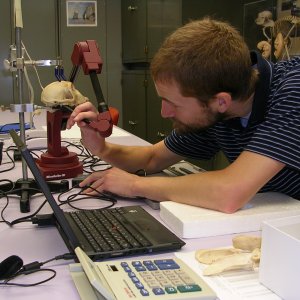
I came to Mizzou in Fall 2007. My family and I enjoy living in Columbia. Don't be surprised if you see me at a local running race (5K to marathon) or putting in some training miles on Columbia's many parks and trails (e.g., MKT, Bear Creek Trail, Cosmo Park, Stephens Lake Park, Rockbridge State Park). Give me a wave!
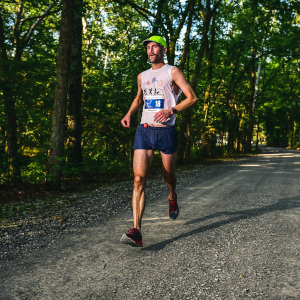
Links, etc.
Anthropology
Primatology
Genetics
Tools
- R for data analysis and visualization
- Swirl to learn
R, among many other resources - PLINK for genetic analysis
- git and gitlab to control and share code
- emacs with ESS, org, and citar for any kind of writing
- Overleaf = Google Docs for LaTeX
- Zotero if you're not into Bib(La)TeX
- syncthing peer-to-peer file synchronization
- Mizzou-approved OneDrive cloud storage
- Mizzou's high performance computing cluster
Fun
- Columbia Track Club
- Ragtag Cinema
- Missouri Theatre
- Blue Note
- Retro Games Online
- Instructables
- MU Maneater
- Dagens Nyheter
- Ars Technica
- Longform
- Nautilus
Last updated: Thursday, February 22, 2024